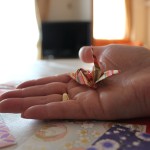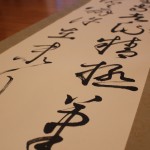In Japan, origami is something for pleasure and also something praying for. Origami became popular in Edo period and it was incorporating in kindergarten education in the Meiji Period (1868 to 1912). It is now taught in a handicraft and drawing class at elementary school. Generally, it is very common for mothers to teach children how to make cranes and other various figures by origami at home. Origami is a very well known leisure activity and always loved by Japanese people.
Origami, especially crane shaped origami has a special meaning. “Senbazuru” is a string of thousand folded paper cranes. It is usually sent to a patient as a prayer for recovery from illness. The crane is one of the symbols of Read More


